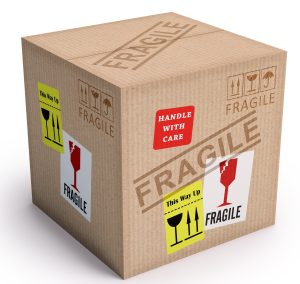Recently I was reading “Antifragile,” a book by behavioral economist Nassim Taleb that looks at how some systems are more likely to break when chaos and disruption occur. In contrast, other “anti-fragile” systems can, with apologies to the old Timex slogan, take a licking and keep on ticking even better than before.
Taleb’s book got me thinking. The concept of fragility and anti-fragility has some intriguing applications for entrepreneurs, especially those in second stage. According to Taleb, systems become fragile when they strive for too much safety, too much protection.
In startup mode, entrepreneurs are focused on developing an economic system, meaning how they make money, add value and capture a market. As their companies grow and they add employees, founders suddenly have a social system on their hands — and the success of their economic system is largely dependent on the social system.
So my question to second-stage entrepreneurs is this: Are you making your employees and organizations too safe?
It’s easy to feel protective about the company you’ve created and the people you hired, especially those who were with you in the beginning. Yet second stage is about change — lots of change. Not every employee will be able to grow along with the company. And you’re not helping them grow by being a helicopter boss or cultivating a country-club atmosphere.
Perhaps you might pull your punches a little and don’t deliver necessary criticism because you’re afraid of hurting their feelings. Maybe you hold off on delivering bad news or try to solve problems for employees instead of enabling them to do so. If so, you could inadvertently be making your system fragile.

The idea is to create a little stress now that will result in a stronger system later.
For example, we prune plants and trees because it encourages new growth. Similarly, your business is an organic system where all participants need a little pressure — even your top performers.
How to go about this? Some general actions would be to have employees swap teams, give them new goals, change who they report to or assign them to different clients.
Another approach, more macro in nature, is to introduce a “catalytic mechanism” — Jim Collins’ term for a tool that transforms big, lofty goals into real-world results. For example, Collins points to Graniterock, a California-based provider of crushed gravel, concrete, sand and asphalt. Wanting to excel at customer service, Graniterock’s owners introduced a short-pay guarantee. If customers weren’t happy for any reason, they could scratch out the total amount due on their invoices and pay what they thought the transaction was worth. The catch, however, was that customers had to write a note about why they were paying less. A unique approach to capturing complaints, this short-pay guarantee enabled Graniterock’s owners to identify problems that might not otherwise come to light.
To me, this kind of catalytic mechanism also serves as an anti-fragility tool because it puts extra pressure on employees. After all, no one wants to be flagged for the short pay. So delivery drivers are going to be a little more courteous, employees who fill the orders are going to be a little more fastidious, and the handoff between departments is going to improve. Bottom line, while this mechanism may sound threatening, it produces positive results: Everyone starts to pay more attention to the customer.
This concept of anti-fragility is especially important as companies mature, because they typically add more structure. Structure is fine as long as you don’t go overboard; too much turns you into a bureaucracy, which is like having organizational osteoporosis. Your company’s bones become brittle, so when something disruptive happens, be it an external or internal event, it’s likely to suffer a fracture beyond repair.
To strengthen your system’s skeleton, make sure you have entrepreneurial thinkers in your company — people who ask “Why do we have to do it this way?” and find unique catalytic mechanisms to introduce. It’s like practicing organizational yoga.
Be prepared for pushback, for any time you introduce change, it will stir up angst (with some employees more than others, such as those who get shook up if their stapler is moved). Yet introducing change in periodic doses is important to building resiliency. Then, when an unexpected setback happens, your company can endure it — and bounce back stronger.
Granted, there are times when you may have too much chaos and need to introduce calm. Creating an anti-fragile organization is about situational leadership — applying the right dose of stress at the right time.
It’s equally important to apply this concept of antifragility to yourself. Engage in something that might be difficult, even painful, that will ultimately stimulate personal growth. For example, start learning a foreign language. Commit to an exercise regimen. If you’re an introvert, join others in the company lunchroom instead of eating at your desk. If you’re an extrovert, take some time for contemplation. Do whatever you can to get out of a set routine, even something as simple as taking a different route to work. You never know what might turn up.
Bottom line, leadership starts with you. Look for ways to make yourself, your family and your organization more resilient, more innovative and less fragile.
(Published Sept. 11, 2017)
